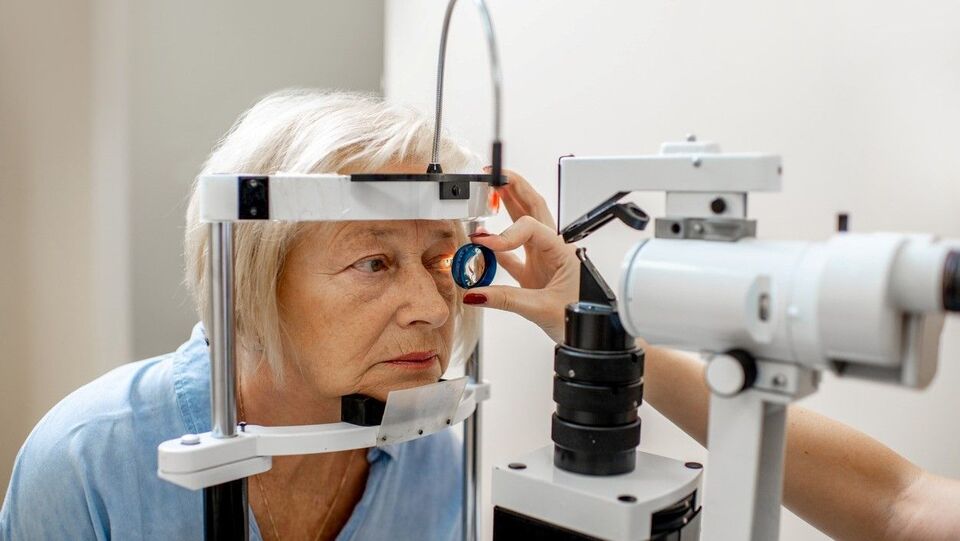
Hospiten tells us about glaucoma and its early detection
March 13, 2023
Glaucoma is damage to the optic nerve that sends images from the eye to the brain.
When damaged, it first affects the peripheral field of vision, continues towards the center and can lead to total blindness.
It is caused by a difficulty in the drainage of the aqueous humor (the fluid that fills the front part of the eye) resulting in an increase in Intraocular Pressure (IOP) and subsequent progressive and irreversible damage to the neurons of the optic nerve, causing loss of vision.
Glaucoma is the number one cause of irreversible blindness in the world and the second cause of all types of blindness after cataracts.
It affects 3.5% of people between the ages of 40 and 80. It currently affects 75 million people worldwide and is estimated to affect 111 million by 2040, but the most striking thing is that only 50% of those affected know they have it.
It can affect anyone at any age, but is more common in people with the following risk factors:
- Age over 50.
- Family history of glaucoma.
- African or Asian race.
- Previous eye disease or trauma.
- High myopia or hyperopia.
- Diabetes.
Symptoms of glaucoma
Symptoms vary depending on the type of glaucoma:
Chronic glaucomas are the most common: In the early stages, there are no symptoms, although peripheral vision begins to deteriorate. In the advanced stages, vision is reduced only in the central area and can lead to total blindness.
Acute glaucomas are less common but more aggressive, causing very sudden intense pain, red eyes and decreased vision, as well as headache, nausea and vomiting.
How it is detected
Glaucoma is usually diagnosed during a basic eye exam, during which your vision and intraocular pressure are measured and the structures of the front and back of your eye are examined.
If glaucoma is suspected, your eye doctor will perform a series of more specific tests:
- Gonioscopy: examines the trabeculum or drainage area of the eye.
- Pachymetry: measures the thickness of the cornea to adjust the IOP measurement.
- Visual field: examines all areas of peripheral vision on a point-by-point basis.
- Optical Coherence Tomography (OCT): A laser scan of the optic nerve.
All four tests are quick and painless.
Treatment Options
The type of treatment depends on the type of glaucoma: chronic-acute, primary-secondary, open-angle-closure, etc.
- Eye drops: This is the most common way to treat glaucoma. What they do is lower the intraocular pressure. If the treatment is started in time and followed correctly, they are enough to control the disease in most cases.
- Laser: There are several laser techniques that can be used to treat some types of glaucoma: YAG iridotomy, laser trabeculoplasty, cyclodiode, etc.
Surgery
Mild cases: Today we have many micro-implants (MIGS) that allow us to lower the IOP with a relatively simple surgery. They are usually combined with cataract surgery.
Moderate or severe cases: There are more complex techniques that achieve a greater IOP reduction and are usually used when eye drops or laser are not enough to control the disease: trabeculectomy, deep non-perforating sclerectomy, drainage devices, etc.
Evolution of glaucoma
After treatment is started and the intraocular pressure returns to normal levels, the damage to the optic nerve and visual field is halted, and most patients maintain a level of vision that allows them to lead a normal life.
It is not possible to know whether glaucoma is controlled by the way the patient sees, because the brain compensates for the areas of vision loss and the patient will not feel that he/she has gotten worse until the disease is very advanced. Therefore, we must insist that the only way to know if the glaucoma has stabilized is to see the ophthalmologist.
#HospitenMexico #HospitenPuertoVallarta
#HospitenLosCabos #HspitenCancun
------ADVERTISEMENT------
------ADVERTISEMENT------
------ADVERTISEMENT------
------ADVERTISEMENT------



